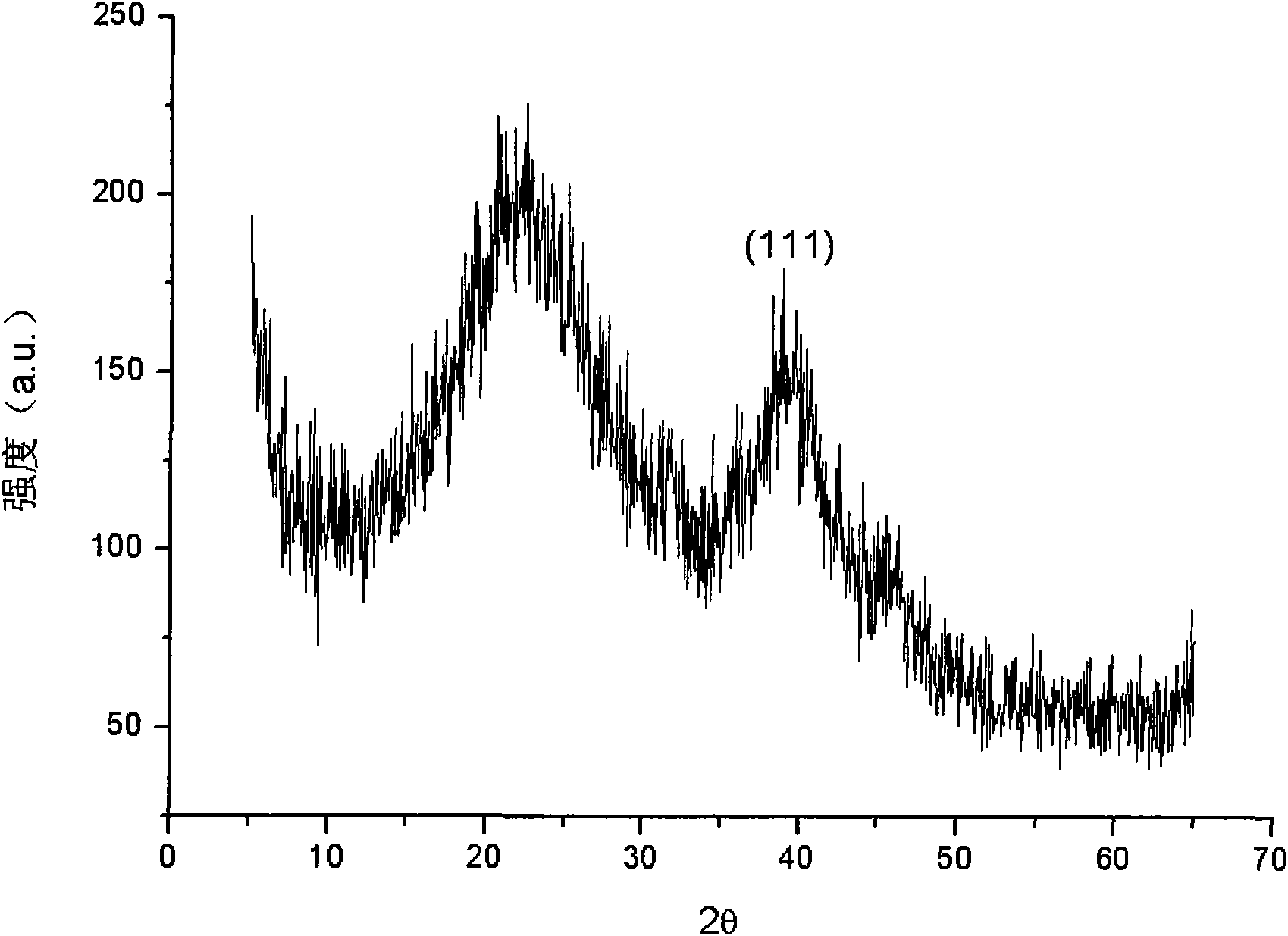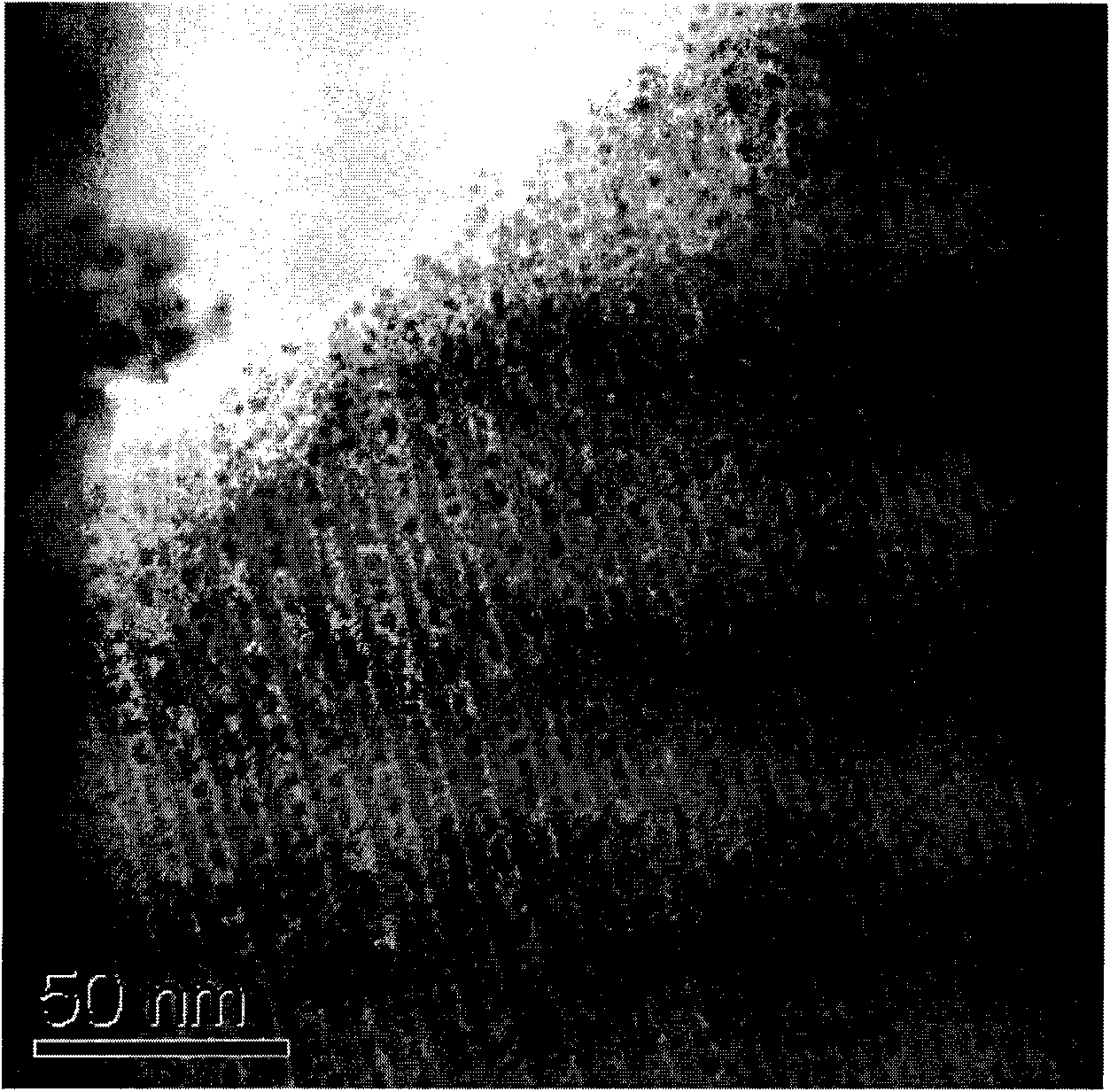Palladium nanoparticle catalyst and preparation method as well as application thereof
A nanoparticle and metal nanoparticle technology, which is applied in the field of palladium nanoparticle catalyst preparation, can solve the problems that N atoms cannot combine with metal ions, affect the application, and lose dendritic compounds, so as to achieve recycling without pollution and good stability , the effect that is not easy to lose
- Summary
- Abstract
- Description
- Claims
- Application Information
AI Technical Summary
Problems solved by technology
Method used
Image
Examples
Embodiment 1
[0024] Example 1: Using the prepared catalyst to catalyze the microwave-assisted Suzuki coupling reaction of iodobenzene and phenylboronic acid
[0025] Under nitrogen protection, 0.8gK 3 PO 4 , 0.005g catalyst (0.5mol%), 0.128g phenylboronic acid (1.05mmol) are added in the 20ml microwave reaction flask that has 1.8ml deionized water, 1.2ml ethanol, wait to disperse evenly, add iodobenzene 1mmol, put into microwave after sealing In the reactor, react at 100°C for 30 minutes. After the reaction is finished, the organic phase is extracted with ethyl acetate, the inorganic water phase containing the catalyst powder is centrifuged, washed three times with water and washed twice with ethanol, and the catalyst is recovered by heating. The organic phase was extracted with saturated brine, and then dried over anhydrous sodium sulfate. After vacuum distillation, the product to be tested was obtained. The yield was measured by the external standard method in gas chromatography, and...
Embodiment 2
[0027] Example 2: Using the prepared catalyst to catalyze the microwave-assisted Suzuki reaction of iodobenzene and p-tolylboronic acid
[0028] Under nitrogen protection, 0.8gK 3 PO 4 , 0.005g of catalyst (0.5mol%), 1.05mmol of p-toluene boric acid 1.05mmol were added in a 20ml microwave reaction flask with 1.8ml of deionized water and 1.2ml of ethanol. In a microwave reactor, react at 100°C for 30 minutes.
[0029] After the reaction is finished, the organic phase is extracted with ethyl acetate, the inorganic water phase containing the catalyst powder is centrifuged, washed three times with water and washed twice with ethanol, and the catalyst is recovered by heating. The organic phase was extracted here with saturated brine and then dried over anhydrous sodium sulfate. After vacuum distillation, the product to be tested was obtained. The yield was measured by the external standard method in gas chromatography, and the yield was 91%.
Embodiment 3
[0030] Example 3: Using the obtained catalyst to catalyze the microwave-assisted Suzuki reaction of iodobenzene and p-methoxybenzeneboronic acid
[0031] Under nitrogen protection, 0.8gK 3 PO 4 , 0.005g catalyst (0.5mol%), 1.05mmol p-methoxyphenylboronic acid 1.05mmol are added in the 20ml microwave reaction bottle that has 1.8ml deionized water, 1.2ml ethanol, wait to disperse evenly, add iodobenzene 1mmol, seal and put Put it into a microwave reactor and react at 100°C for 30min.
[0032] After the reaction is finished, the organic phase is extracted with ethyl acetate, the inorganic water phase containing the catalyst powder is centrifuged, washed three times with water and washed twice with ethanol, and the catalyst is recovered by heating. The organic phase was extracted here with saturated brine and then dried over anhydrous sodium sulfate. After vacuum distillation, the product to be tested was obtained. The yield was measured by the external standard method in gas ...
PUM
| Property | Measurement | Unit |
|---|---|---|
| particle size | aaaaa | aaaaa |
| particle size | aaaaa | aaaaa |
| particle size | aaaaa | aaaaa |
Abstract
Description
Claims
Application Information
 Login to View More
Login to View More - R&D
- Intellectual Property
- Life Sciences
- Materials
- Tech Scout
- Unparalleled Data Quality
- Higher Quality Content
- 60% Fewer Hallucinations
Browse by: Latest US Patents, China's latest patents, Technical Efficacy Thesaurus, Application Domain, Technology Topic, Popular Technical Reports.
© 2025 PatSnap. All rights reserved.Legal|Privacy policy|Modern Slavery Act Transparency Statement|Sitemap|About US| Contact US: help@patsnap.com



